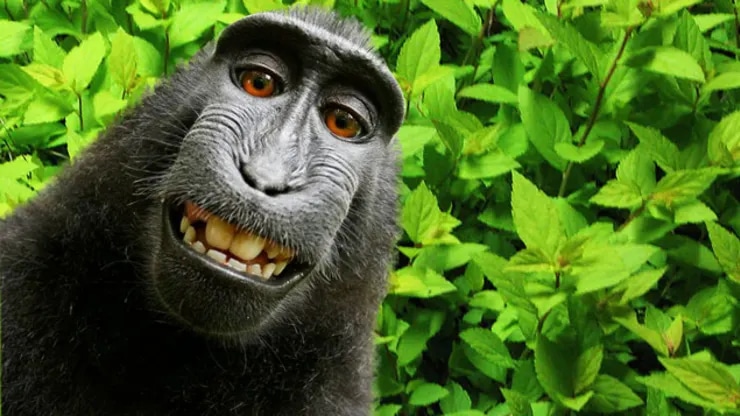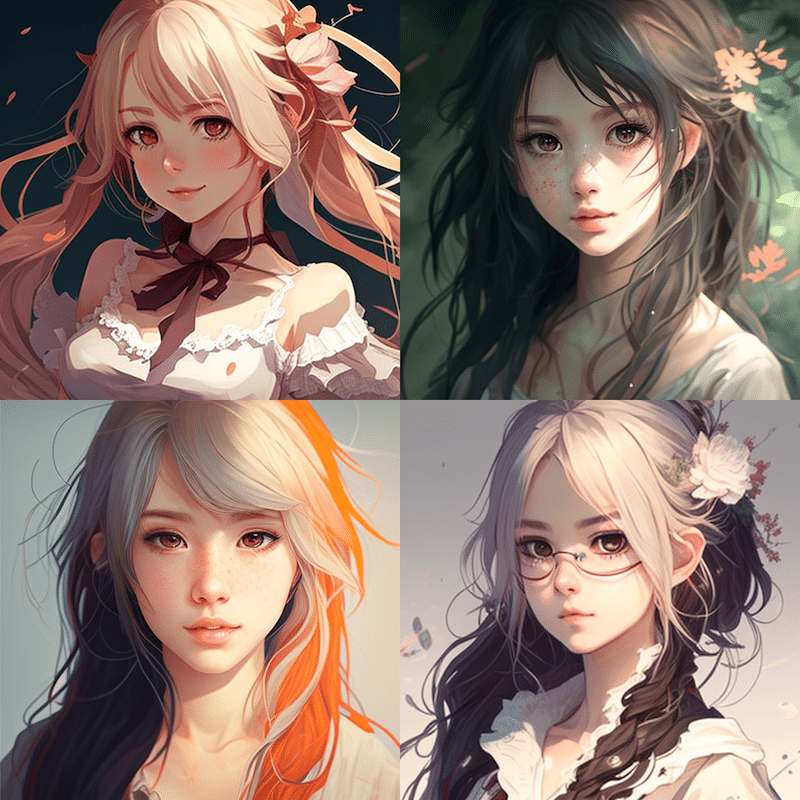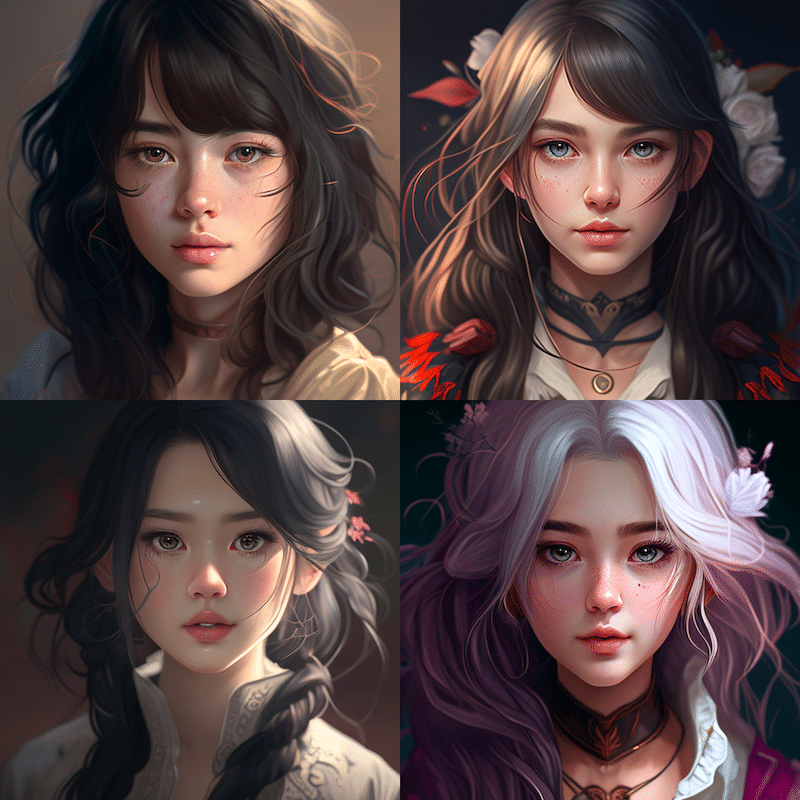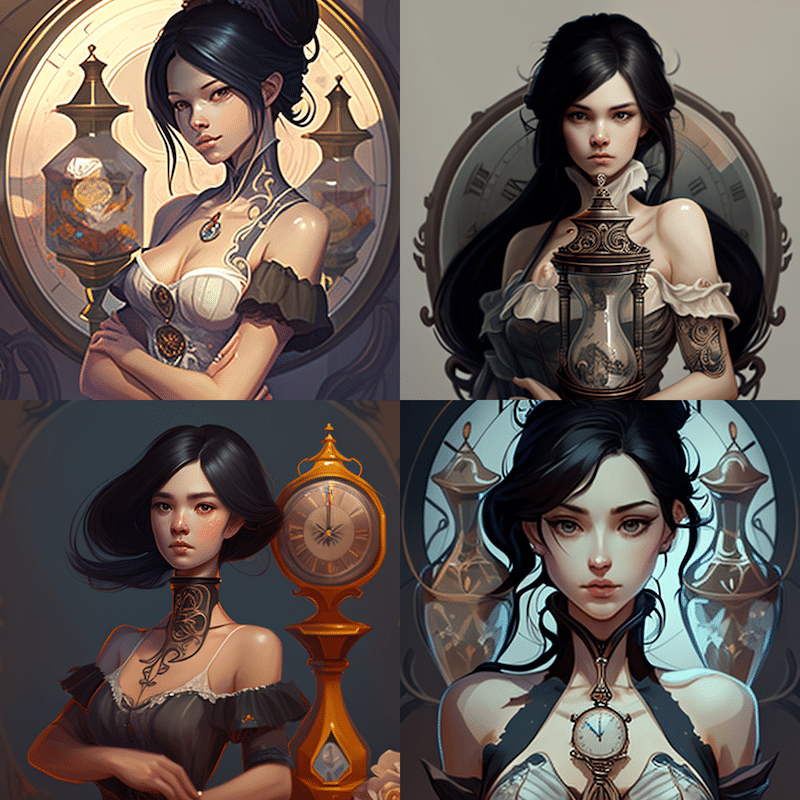Computer art platforms, such as ChatGPT, Dall-e, MidJourney, or Nightcafe, can create amazing artistic compositions merely by providing a description of what the user wants. Type “lonely robot sitting on a park bench” into MidJourney, and the AI will produce beautiful computer art without knowing how to draw, paint, or even use a camera.

A lonely robot sitting on a park bench (rendered by MidJourney).
Given how easy it is to create computer art, it isn’t hard to see how these generative AI applications are poised to take over a lot of content creation over the next few years. Some pundits claim that as much as 90% of content on the web could be AI-generated by 2025.
With so much AI computer art already flooding the internet, it is important to consider who is the owner or copyright holder of the content. Is it the AI itself, the owner of the AI that programmed it to provide the content, or is the computer art non-copyrightable and immediately in the public domain, free for anyone to use?
Why Does Copyright for Generative AI Computer Art Matter?
For most creative works, copyright protection is available automatically when work is created. Copyright registration is not required, although there are benefits to registration. The copyright holder, whether it is the artist, writer, or company, has the exclusive right to determine who can copy, distribute, and display the work, as well as where and when these actions can occur.
Who owns the copyright has substantial implications for those creating computer art with generative AI tools and those who want to use or license these same AI-created works. After all, copyright was initially created so that those who put time and effort into creating content could reap the rewards of their efforts. If an author spent a year writing a novel that anyone could sell once it was published, where would the incentive be to spend the time writing it?
Whether Ai-created content is copyrightable will profoundly affect creators. Everything from the devaluation of creative content to the unbridled ability to copy content could wreak havoc on the entire creative industry.
Is the Content Created by Generative AI copyrightable?
To fully understand whether copyrights apply to AI computer art, we must first examine the rules provided in the Copyright Act, which provides protection for:
- an original work of authorship,
- fixed in a tangible medium
- that has a minimal amount of creativity.
If a work doesn’t have all three of these components, then it is not copyrightable subject matter.
Originality and Tangibility
Let’s start with an analysis of the first prong: is AI computer art sufficiently original enough to be copyrightable? Originality is grounded on the idea that the resulting product is new or novel, not a reproduction. In fact, a host of artists have been upset about this issue because they say AI image generators are copying their style to make thousands of new images. The generative AI tools aren’t creating anything truly original from their perspective. The AI is just copying the styles that the artists have developed over many years of hard work.
Unfortunately, styles are not copyrightable, only the specific work created in that style. Anyone can create a work in the style of Andy Warhol. What they can’t do is make a copy or a work closely resembling an artwork by Warhol. Plus, copying a style doesn’t mean that the work created isn’t unique and original. After all, using other artists’ works as references to create an artwork is common practice in the art world, and few artists would consider that those works were not sufficiently original.
Given the millions of artworks used to train generative AI, it is rare to see an output closely resembling an existing artwork that would be considered an infringement on another artist’s work. It is also likely that the AI developers have included code to limit the production of content that too closely resembles copyrighted works to ensure that the companies that own the AI tools stay out of legal trouble.
As a result, the AI-created artwork should be sufficiently original enough to satisfy the originality requirements for copyright.
Prong 2 is also easy to satisfy. As soon as the artwork is created, it is ‘fixed in a tangible medium,’ which means it is placed into computer memory and displayed on the screen.
The Creativity Requirement
Prong 3 is where things get a bit muddy. There are two issues considered by Congress and the Courts: 1) does the author need to be human, and 2) how much creativity is needed for copyright protection?
The Human Requirement. As humans, it’s difficult to consider that a machine can be intelligent enough to engage in creative thought – and U.S. Copyright lawmakers have considered the issue in writing the law.
503.03(a) Works-not originated by a human author.
In order to be entitled to copyright registration, a work must be the product of human authorship. Works produced by mechanical processes or random selection without any contribution by a human author are not registrDoable.
This stance flows from case law (e.g. Feist Publications v Rural Telephone Service Company, Inc. 499 U.S. 340 (1991)), which specifies that copyright law only protects “the fruits of intellectual labor” that “are founded in the creative powers of the mind.” (Note that not all countries have adopted this approach.)
So what does that interpretation of copyright law tell us? For one, it unequivocally states that a computer or an animal shouldn’t, and can’t, hold a copyright. This makes sense when you consider the function and purpose of copyright law, which gives the copyright holder the right to determine how a work is used. Technology, like AI, inherently can’t hold copyright since it cannot express its intention as to how the images it creates will be used or enforce those rights and prevent anyone from using it without permission.
Similar to the controversy over the ‘monkey selfie, in which PETA sued for copyright infringement on behalf of a monkey who took a photo of itself, which later wound up being shared across the internet. The court deemed the monkey selfie lawsuit frivolous and reinforced the notion that animals can’t hold copyright protection in creative work. Computers, like monkeys, can’t go to court, after all.

This selfie taken by a Macaque using a camera stolen from a photographer couldn’t hold copyright because non-human works are ineligible for copyright protection.
Computer Art is a bit different from the Monkley Selfie situation in that the AI isn’t creating art independently. AI computer art requires human input to get a result.
The Supreme Court considered ownership of computer art in a 1973 court case, Goldstein v. California. There, the Court interpreted the authorship requirement to include “any physical rendering of the fruits of creative intellectual or aesthetic labor.” The Supreme Court reasoned that, in most cases, a computer could only generate art with significant input from an author or user. Think about using Photoshop or creating art on an iPad. Even though the art is being generated by the application, it doesn’t do it without significant input from a user.
If you upload a photo you have taken to Photoshop and manipulate the contrast and brightness or even add a fake sky to the image, it is your photo, and the edits are your creative choices, so it would hold copyright protection because it requires significant input from you.
From that perspective, could an AI tool that requires user input to create art be like Photoshop? Probably not.
The Minimal Creativity Requirement. Regardless of what you create, the Supreme Court decided that the work must have a “minimal amount of creativity” for it to receive copyright. What is a minimal amount? While the courts generally determine this case-by-case, the minimum amount is usually very little. Work doesn’t need to be unique or good to be considered sufficiently creative. All that is required is that the work be the product of a minimal creative spark. On the other hand, names, titles, short phrases, recipes, and lists, do not receive copyright protection because the degree of creativity is too minimal to meet the threshold.
So let’s take a simple AI query: a beautiful anime girl. Here is the output from MidJourney

A beautiful anime girl (rendered by MidJourney).
The phrase itself would be ineligible for copyright protection. Given the minimal creativity in the phrase, it would be hard to see how the courts would then grant copyright protection to the output.
However, would a more complex input be different? In many cases, getting the image that you want from AI requires continually refining your text-based inputs and changing the terms and phrases as necessary. For example, we could refine our initial phrase to include more details.

Beautiful anime girl, highly detailed digital painting (rendered by MidJourney)
After several iterations and hours of tweaking, a user can create images using fairly detailed and sophisticated phrases to generate images.

Beautiful anime girl with an hourglass slim figure, black hair, body portrait, slight smile, highly detailed, digital painting, concept art, sharp focus, illustration, in the style of Greg Rutkowski and Alphonse Mucha. (rendered by MidJourney)
Given the hours of work it can take to generate AI imagery, would the courts consider that there was enough creativity in creating the artwork to warrant copyright protection? Even if this were the case, many other questions would still need to be resolved. How would anyone know how much effort went into this development? What if another user entered the exact description into another generative AI tool, like Dall-e, and received a different result? In that case, there is no creativity involved, so how can a court or the Copyright Office know whether the computer art meets the minimum creativity requirement? Would the description itself be creative enough to warrant protection so the author could stop someone from using it to create images through other AI tools?
Generative AI Computer Art Should Be Copyright Free
In the late 1970s, the U.S. Congress created the National Commission on New Technological Uses of Copyrighted Works (CONTU), which studied various new technology issues, including the authorship of computer-generated works. Although CONTU did not expound on the topic extensively, it concluded that authorship rights should go to the user when the user makes a substantial contribution to the output. But when the user does very little, and most of the output is left up to the AI machine, then it is less likely that the user may own the copyright in the output.
While many issues around AI content have yet to be fully decided, and we are likely to see many court cases around this topic in the near future, it does sound like the inevitable direction for AI-generated Content is that it will remain copyright free for anyone to use.
This could be extremely disruptive to the creative industry. Specifically, if anyone can create content by merely formulating proper descriptions, then creative content could lose its value. Why pay a digital artist to create an illustration for $1000 when Dall-e could create it for free? Why would an artist spend time developing their craft when MidJourney could do it for them? Even more problematic is if 90% of the content on the web is AI generated, as some predict, then where will the new, unique content come from that we can use to train the AIs?
It’s too early to see how the copyright and content ownership issues surrounding AI will be resolved. It will likely take years for these legal issues to work through the courts. For now, AI computer art is not copyrightable.
Should generative AI computer art be copyrightable? Let us know what you think in the comments below.
